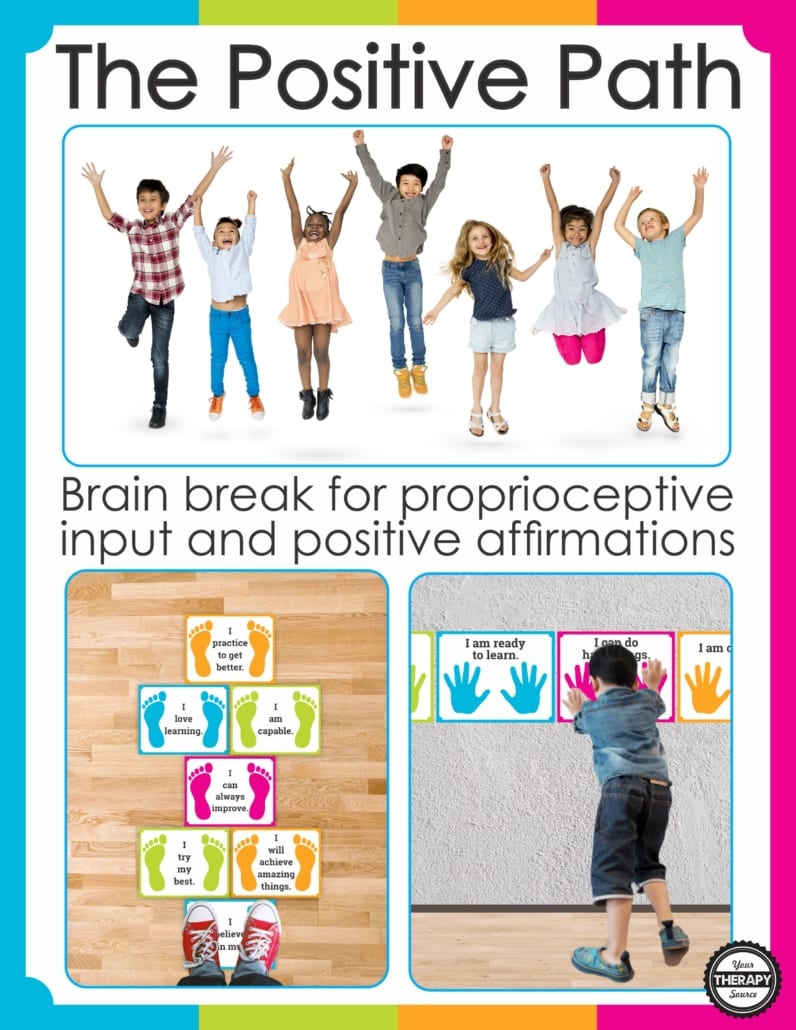What is proprioception?
What is proprioception? Proprioception is the ability of your muscles and joints to determine where they are in space. The proprioceptive nerve endings in the body provide us with the information of where our hands, arms, and legs are in space without having to look at them.

The specialized proprioception receptors in the body tell the brain about the movement and position of the body. For example, being able to touch your nose with your finger when your eyes are closed uses proprioception.
Why is proprioception important?
Proprioception allows the body to plan and react so that we position our movements correctly and smoothly without needing to rely on our vision sense. People use their sense of proprioception for most motor actions.
We need our sense of proprioception to look where we are going when we walk, to pick up a glass of water, to walk in the sand, to wave hello, to avoid knocking into other people and the list goes on and on.
A diminished sense of proprioception can result in clumsiness, poor coordination, improper posture, using too much or too little force, decreased body awareness, motor planning deficits and more.
How can you help a child develop proprioception?
The proprioceptive receptors in the body respond to stretching and compression of the muscles. Therefore, activities that encourage this resistance and movement help to stimulate these nerve endings.
Proprioceptive input activities are usually calming, organizing to the body and help a child to be ready to work.
Examples of proprioceptive activities
Now that the question of what is proprioception has been answered, here are some examples of proprioceptive activities for children:
- pushing (compresses the nerve endings) and pulling (stretches the nerve endings) activities ie push a heavy basket, pull a loaded wagon, etc.
- jumping and bouncing activities ie hopscotch,
hippity hop ball, pogo sticks, bounce house, etc. - wrap the child up tightly in a blanket or towel.
- teach the child to give him/herself a hug to feel where the body is in space.
- carry heavy objects ie groceries, backpack, a stack of books, etc.
- heavy work chores such as raking, shoveling, sweeping or mopping.
- climb playground equipment, use monkey bars, play tug of war, etc.
- use play dough or dig in the sand to provide heavy work for the hands.
- kitchen chores like kneading bread, stirring or using a rolling pin.
- eating chewy foods or sucking through a straw provides heavy work for the mouth.
Resources to help children get proprioceptive input
Ask an occupational or physical therapist if you have questions about the most appropriate activities for a specific child. Here are a few resources to help children develop the proprioception sense.
Combine positive affirmations for kids and proprioceptive input with The Positive Path. Children can jump along the path or do wall push-ups while they read words of encouragement. Students can benefit from proprioceptive input to help get their bodies ready to learn.
Using the power of positive thinking with daily affirmations and physical activity can help students get their brain and bodies ready to tackle the school day.
Yoga is an excellent exercise to increase proprioceptive input. Yoga in the Classroom will help you bring yoga into the classroom, therapy room or clinic with this wide variety of digital downloads including books, cards, and posters! You’ll have the confidence and new ideas to hit the ground running!





